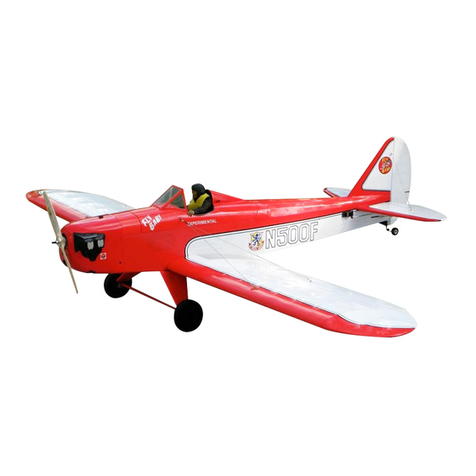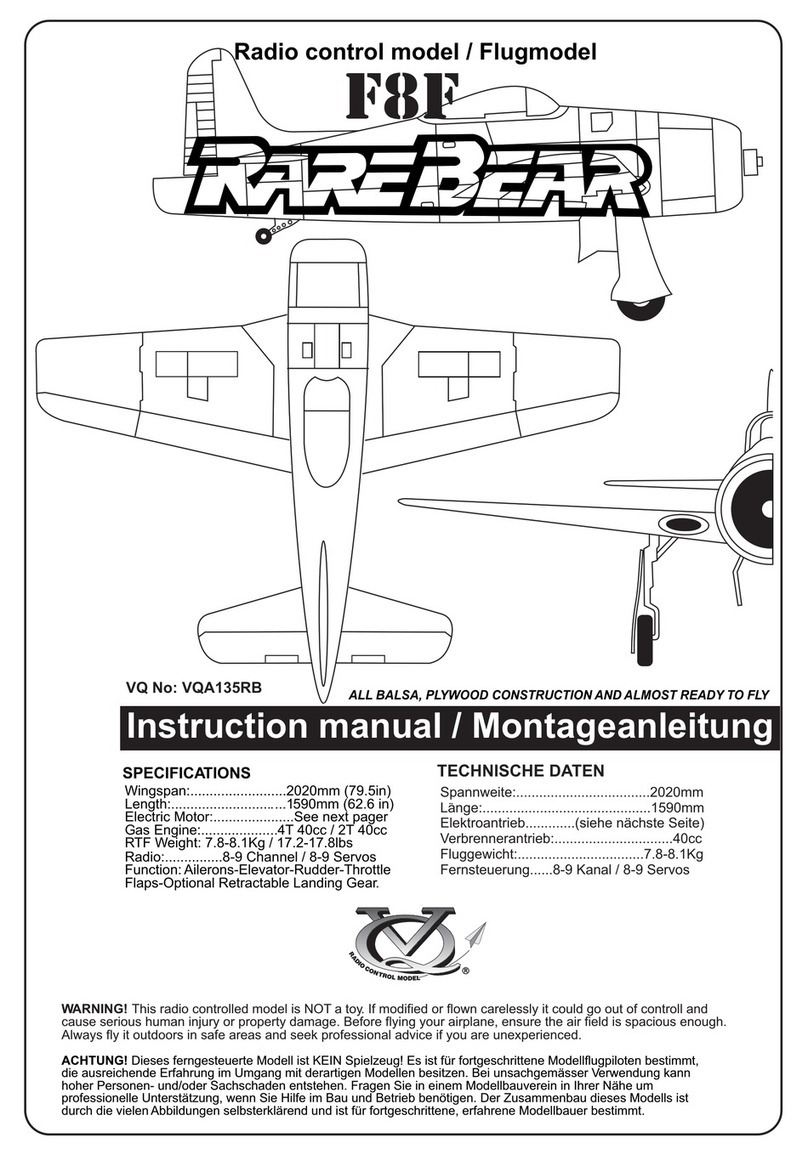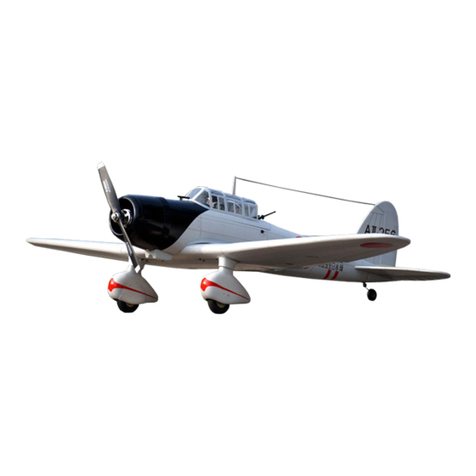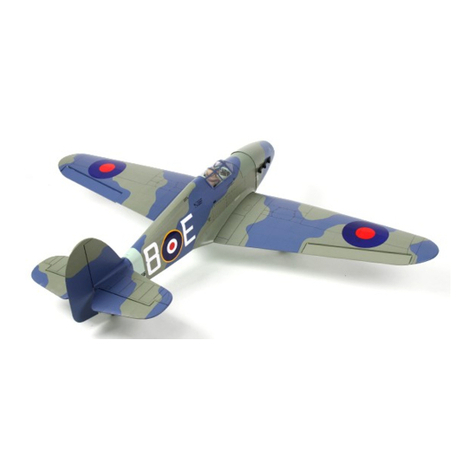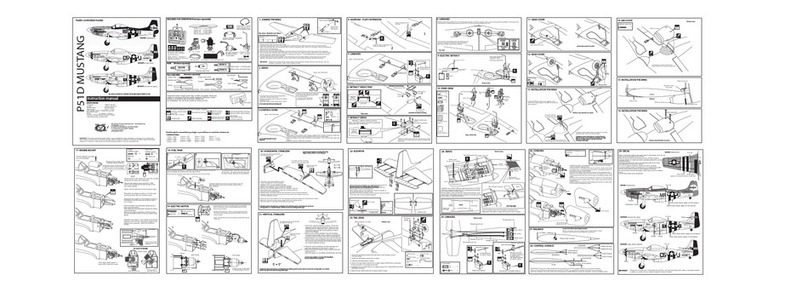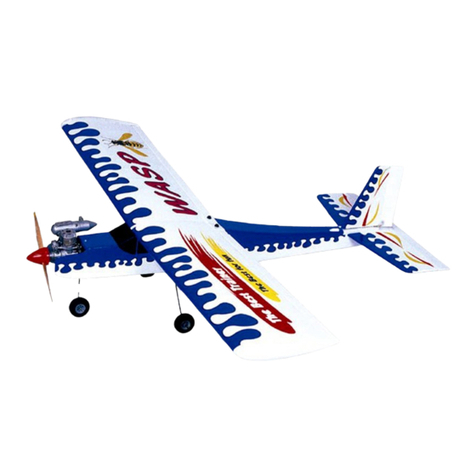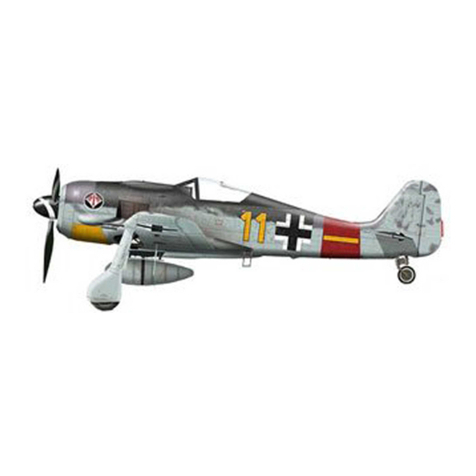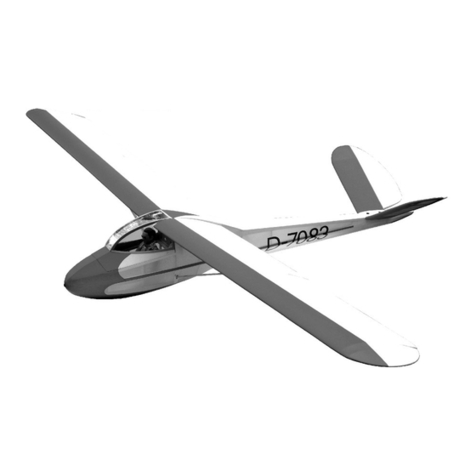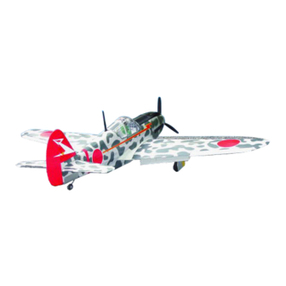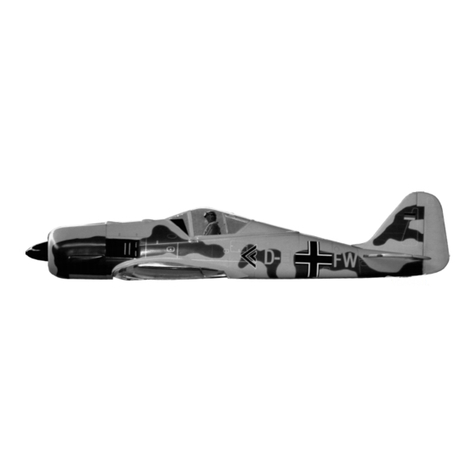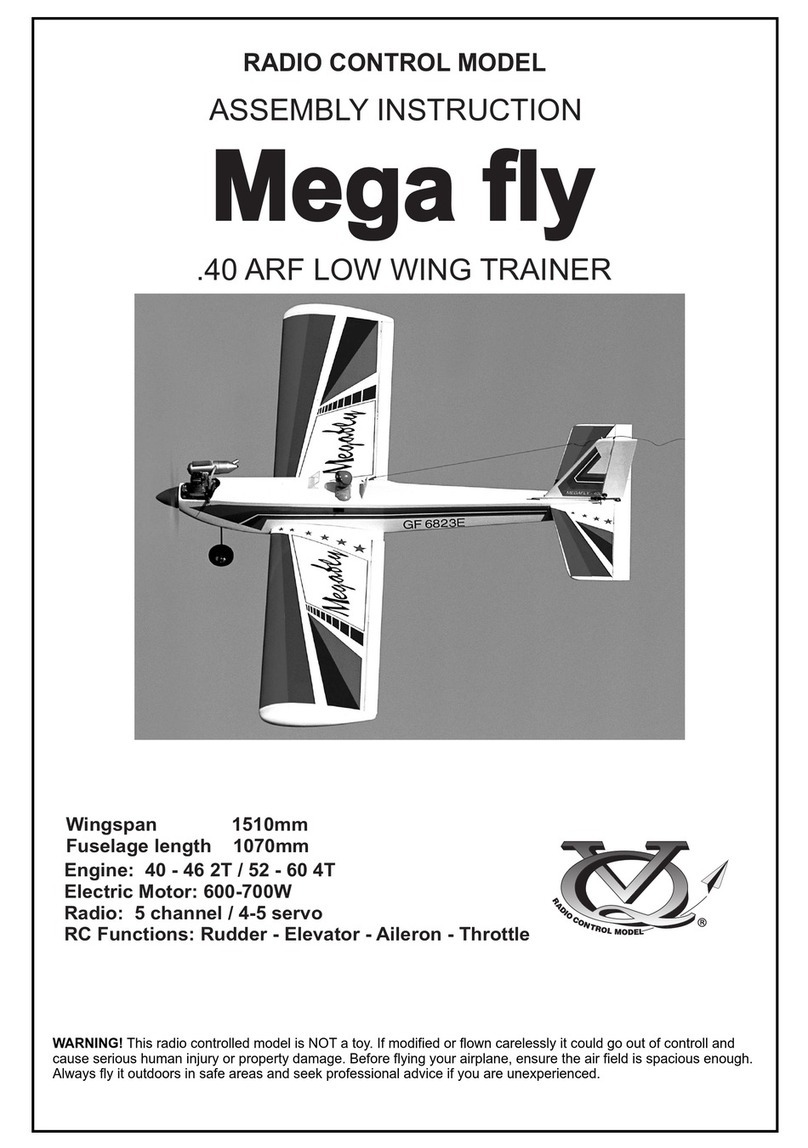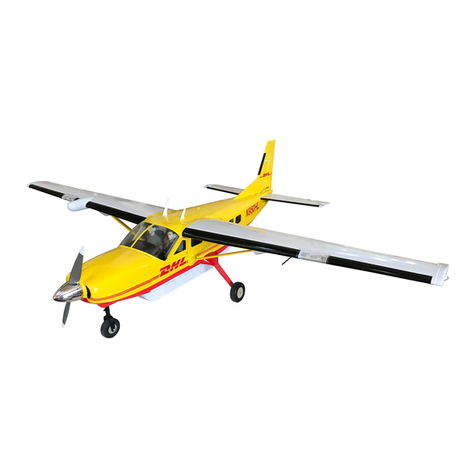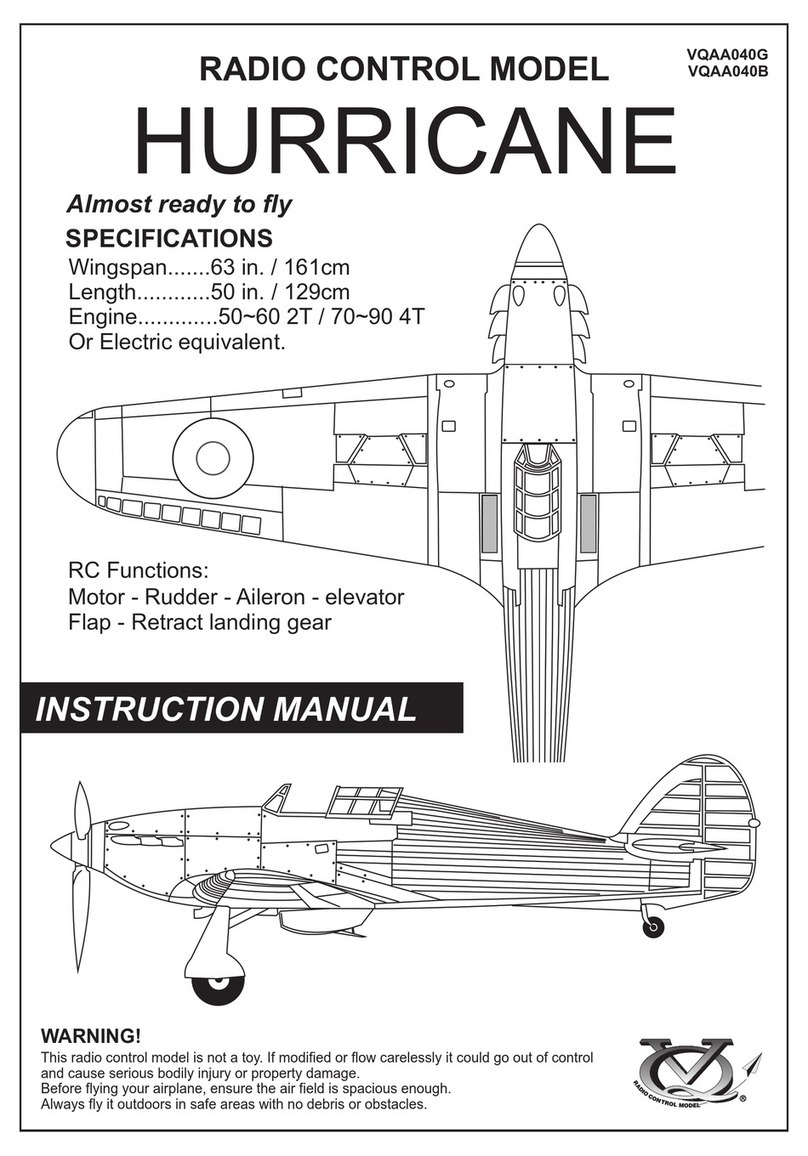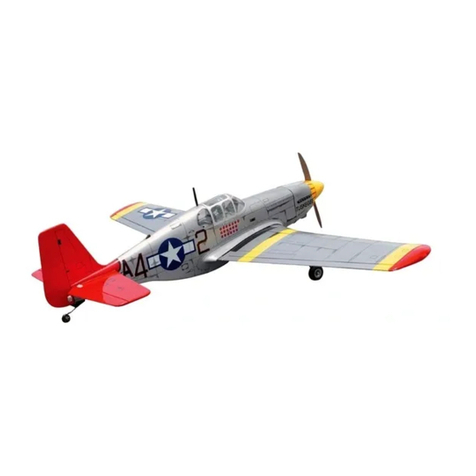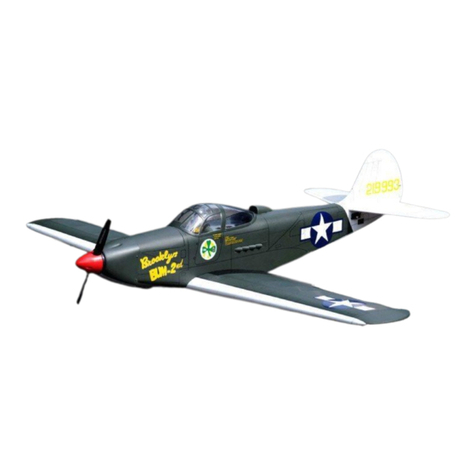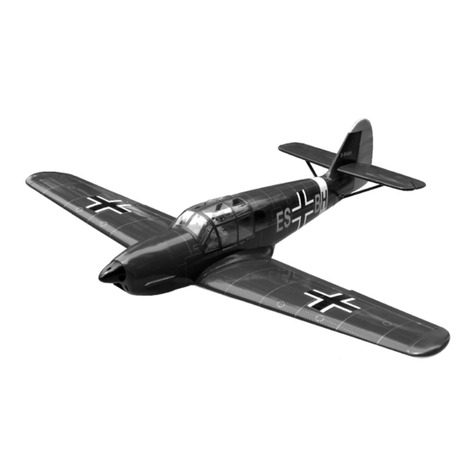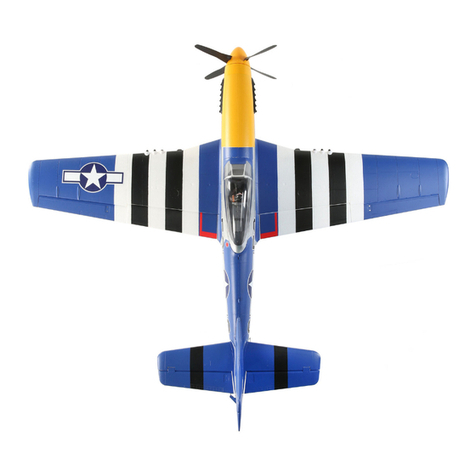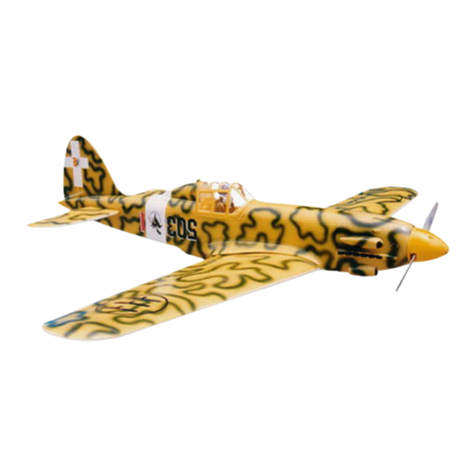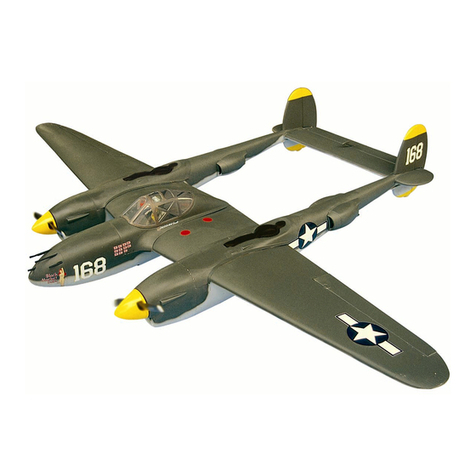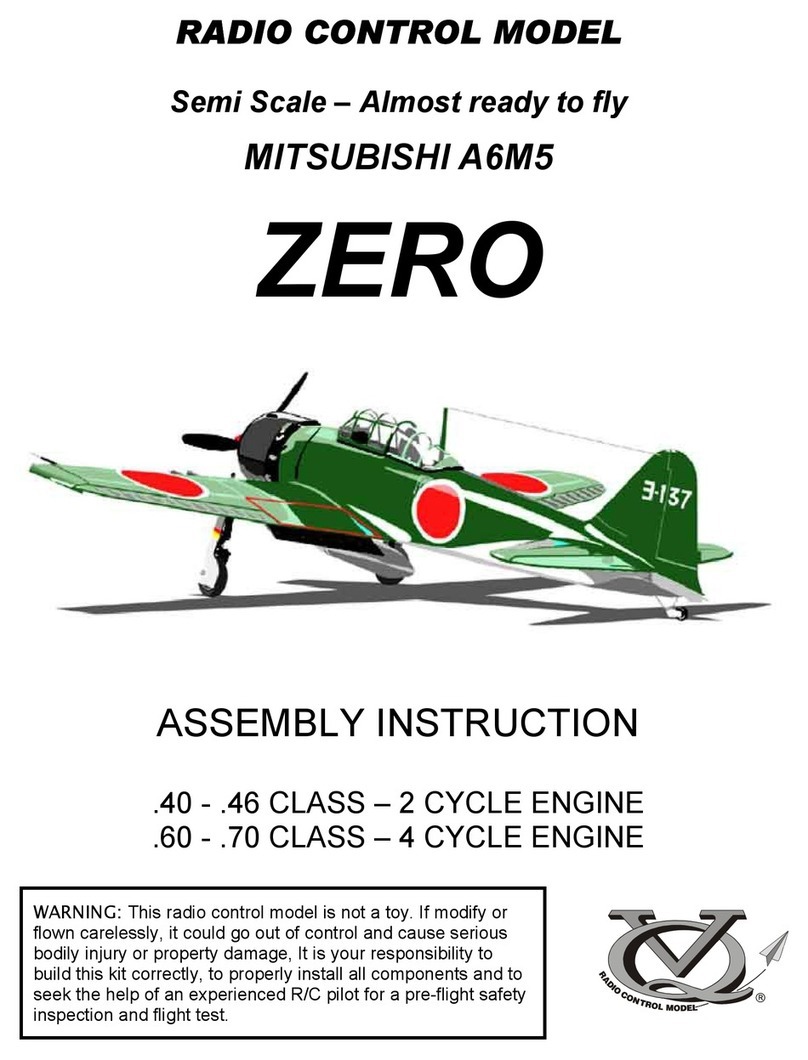AB
AB
Cut away only the
covering both side
5/64x19/32”
(2x15mm) screw
Hinge Line/Control horn
Alignment
9-Vertical / Horizontal Tail
Attach the Vertical Stabilizer and the Horizontal Stabilizer
Incorrect
Correct Incorrect
AA’
A=A’
AA’
A=A’
/
BB’
B=B’
/
Check the alignment of the horizontal stabilizer by measuring from a fixed point along the center line of the fuselage to the
leading edge on each side of the horizontal stabilizer. The distance must be equal on both sides. If not, adjust the stabilizer
until the measurements are the same.
1-Trial fit the horizontal stabilizer in place . Check
the alignment of the horizontal stabilizer. When you
are satisfied with the alignment, use a pencil to
trace around the top and bottom of the stabilizer
where it meets the fuselage.
2-Remove the horizontal stabilizer from the fuselage.
Using the sharp hobby knife, carefully cut away the
covering inside the lines which were marked above.
3-Spread epoxy (30 minute) onto the top and
bottom of the horizontal stabilizer along the area
where the covering was removed and to the fuse-
lage where the horizontal stabilizer mounts.
4-Install the horizontal stabilizer into the fuselage
and adust the alignment as described in steep 1.
Allow the epoxy to cure before proceeding to next
step.
Do the same way with the vertical stabilizer.
Securely glue together. If coming off
during flight, you lose control of your
air plane.
Cut away only the
covering both side
Control horn
................2
2x15mm screw
..........4
* WARNING: When removing any covering
from the airframe, please ensure that you
secure the cut edge with CA or similar cement.
This will ensure the covering remain tight.
Insert the rudder pushrod, threaded end first, into the fuselage
so the threaded rod exits the rudder pushrod slot on the top of
the fuselage.
Screw on clevis 12 ~ 15 complete turns. Fasten the clevis in the
third hole from the inside of the rudder control horn. Mark the
location of the control horn mounting hole positions when you
are satisfied with the alignment.
Remove the rudder control horn and drill these two mounting
holes using 5/64” (2mm) drill bit.
Install the rudder control horn using the two 2x15mm screws
and the back plate.
Do the same way with the elevator control horn.
